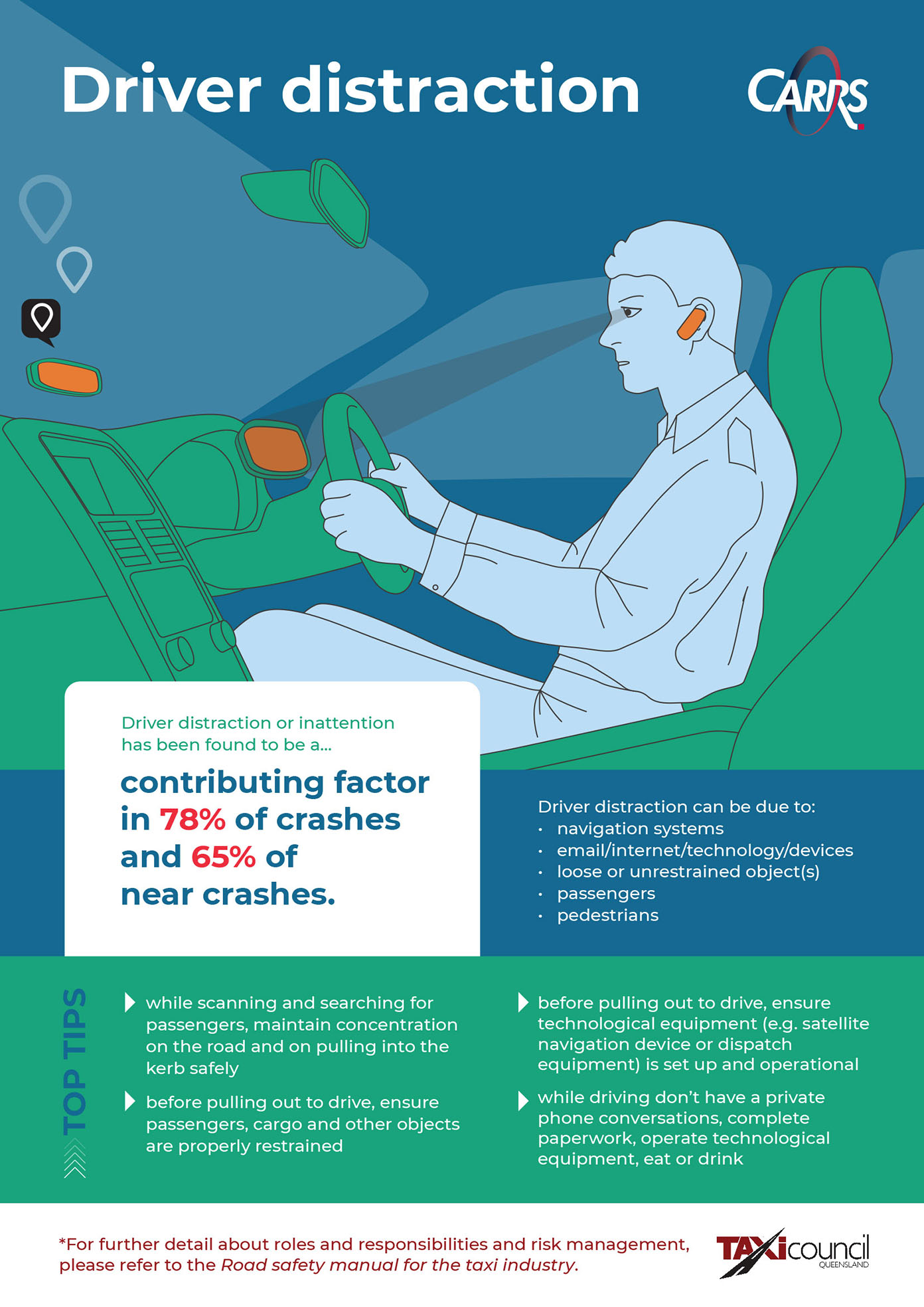
In another positive step to improving road safety, a new safe driving guide has been developed by QUT for taxi operators, owners and drivers.
The Road Safety Manual for the Taxi Industry, developed by QUT’s Centre for Accident Research and Road Safety – Queensland (CARRS-Q) with funding from the Motor Accident Insurance Commission and input from the Taxi Council of Queensland gives all Queensland taxi drivers access to a standardised safety-related framework that highlights key hazards and risks to the industry.
- New coordinated approach to driver safety can be adopted
- Driver distraction and fatigue among the key factors in crashes and near-crashes
- Safety features and technology can reduce injury in taxi accidents
CARRS-Q Senior researcher Amanda Evenhuis said the manual would also provide taxi operators with a number of strategies and considerations to adopt for their drivers to ensure a safer industry.
“The taxi industry has had to adapt to an ever changing landscape, so standarising its approach to safety has never been more critical. Its support for this manual reinforces the industry’s commitment to the safety of its operators, owners and drivers - and consequently, their passengers - which is of utmost importance as the world embraces the use of on-demand ride-sharing services,” Ms Evenhuis said.
“Most of all, it’s about improved road safety for both the drivers and the passengers. We have highlighted some examples of the key hazards and risks and then provided some risk management ideas that could be adopted to make the industry safer.
“While our previous research found examples of initiatives to improve road safety within the Queensland taxi industry, an overarching coordinated, strategic approach was lacking.
“Queensland’s taxi industry structure is unique in that it is distinctly different from other organisational structures. There are more than 11,000 taxi drivers and more than 2,200 owners of taxi service licenses. Then there are all the operators who lease a taxi licence from an owner and the 60-plus booking companies state-wide.”
Ms Evenhuis said the most common factors associated with a higher risk of crashes for taxi drivers are gender (mostly men), age (25-49), driver distraction, vehicle condition, road conditions, organisational culture, high mileage and time pressure.
“Driver distraction or inattention has been found to be a contributing factor of 78 per cent of all crashes and 65 per cent of near crashes by taxi drivers and other drivers,” she said.
“This can be due to navigation systems, phone, email, internet or other technology devices, unrestrained objects, passengers or pedestrians.
“The manual includes tips to avoid these kind of distractions, such as avoiding private phone conversations, paperwork, operating technical equipment like dispatch instruments, or eating and drinking while driving.
“Fatigue is another danger area that can impact on drivers’ mental and physical capacities. Our tips in this instance include not driving more than 14 hours within a 24 hour period, stop and take regular breaks and walks, don’t rely on energy drinks, tablets or coffee to stay awake and let your operator know how you are feeling.
“Research also shows that there is definitely a reduced injury rate when vehicles are fitted with the latest safety technology, including autonomous emergency braking, reversing cameras, lane departure warnings and the like. Owners and operators need to ensure drivers are aware of the safety features of their vehicles.”
Ms Evenhuis said Taxi Council of Queensland and the industry generally had received the manual very positively.
The Road Safety Manual for the Taxi Industry can be downloaded at: https://research.qut.edu.au/carrsq/projects/research-proposal-to-reduce-the-crash-involvement-of-taxis-in-queensland-development-of-driving-safety-resources-and-further-analyses/
QUT is part of a national collaborative group of five major Australian universities that form the ATN (Australian Technology Network of Universities).
Media contact:
Amanda Weaver, QUT Media, 07 3138 9449, amanda.weaver@qut.edu.au
After hours: Rose Trapnell, 0407 585 901, media@qut.edu.au




